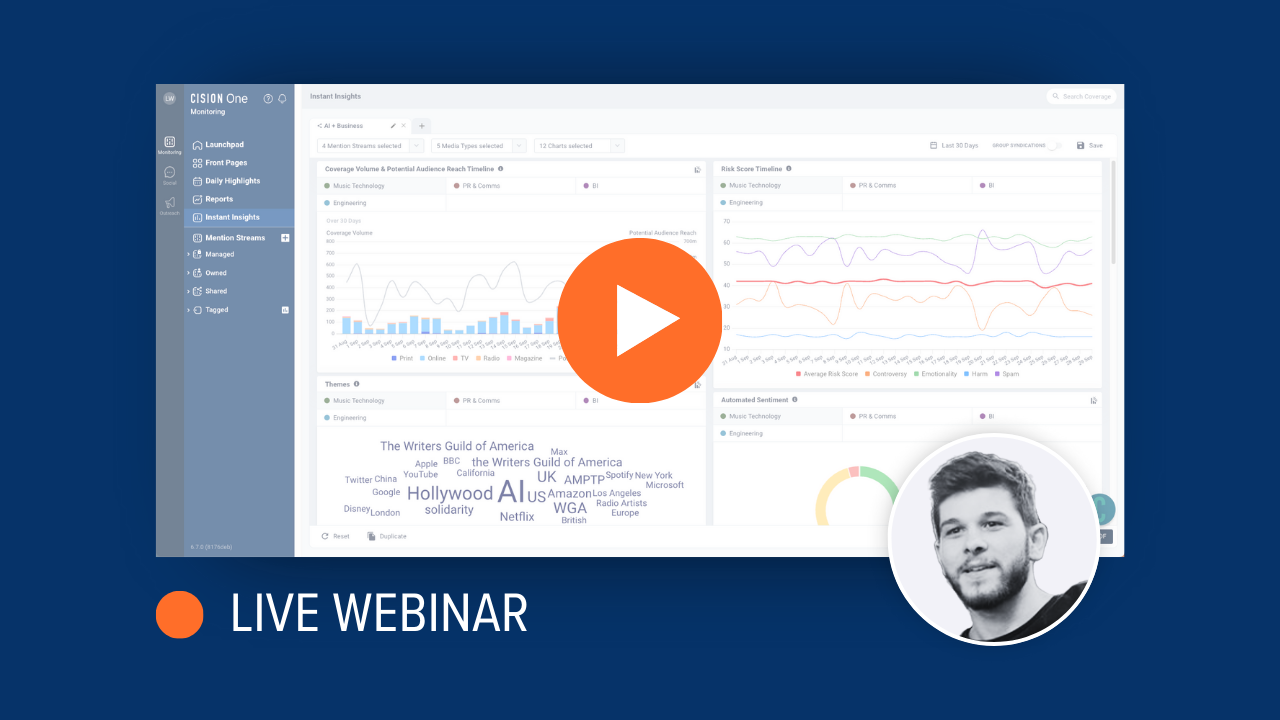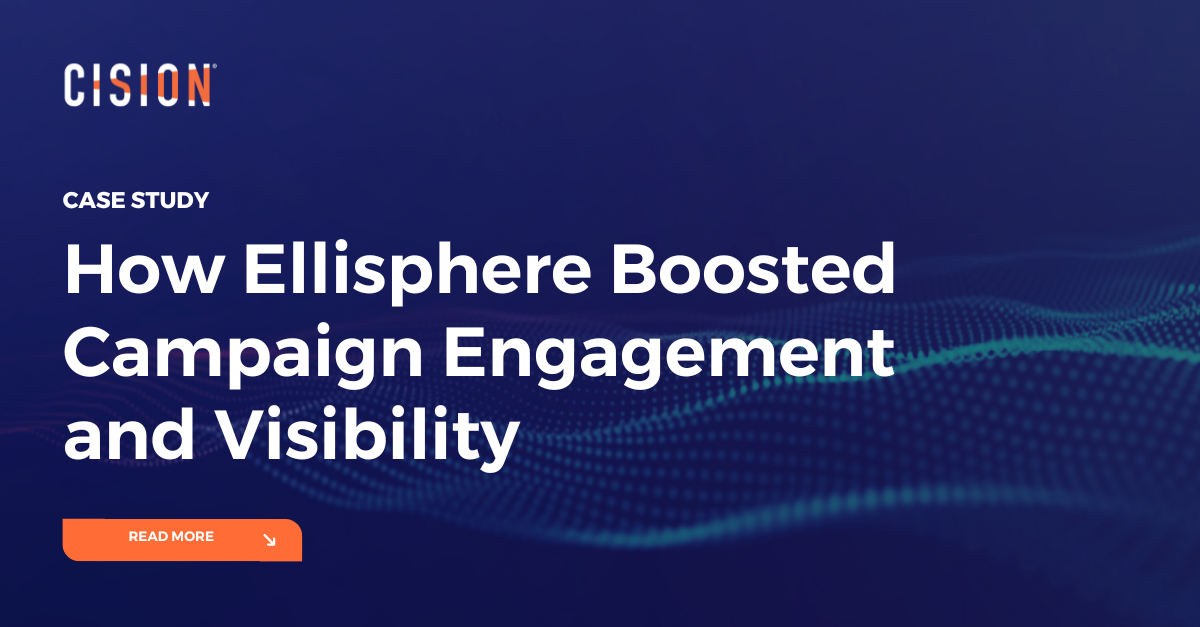Selecting the right list of journalists is essential to a successful PR campaign, but too many professionals would argue that right now they lack the media monitoring and tracking tools to find top talent. So what do you really need to find the right people for the job?
No matter how strong the strategic thinking behind a PR campaign, the task of introducing it to your audience is in the hands of journalists and influencers. They are the gatekeepers who give the campaign credibility and authority to their followers. Choose wisely, and the key messages cut through with crystal clarity, earning a share of voice and boosting online reputation. Choose poorly, and the campaign can fail to get off the ground at best, or generate a negative backlash at worst.
What Makes a Great Journalist Contact?
As a seasoned PR professional, you’ll be building, refreshing and updating your media and influencer contact lists regularly, sourcing top talent from big impact thought-leadership to niche markets that place great trust in their ambassadors.
The goal is to have a portfolio of journalists and influencers you can reach out to who are current, connected and effective.
Current - are they consistently active in their adopted niche, up to date on the latest developments and playing their part in shaping the overall conversation? That’s where media and news monitoring tools can hone in on the most influential channels for news distribution.
Connected - are they a regular presence at conferences, trade shows, and events? Do they carry the authority and reputation to represent the sector and speak on its behalf?
Effective - do their numbers add up? Today, any journalist or influencer faces the stark reality of online metrics that give an unbiased picture of how much their content is being viewed, shared, reacted to and repurposed. Some make a loud noise that quickly dies away, whereas others speak with a quiet whisper that passes along the chain to ears outside the original target audience.
What Is the Challenge in Finding Contacts?
As a PR professional, you face two main difficulties. One is actually finding these contacts in the first place and integrating them into the contact list. The other is keeping their list up to date so that they are ready to deploy when the right campaign arrives.
Time spent searching through the database, cross-referencing contact names with cuttings, and trying to reach out without being kept in the online waiting room could be better spent briefing directly. And let’s not forget that for many PRs, reaching out cold to journalists can feel like entering hostile territory, even if the goals are aligned. Emails are ignored, follow-ups scorned, and pitches mothballed. It’s not just frustrating for both parties. It’s a cost for the PR team to be chasing dead ends.
How to Match the Right Journalist with the Right Campaign
In their defence, many journalists would argue that their precious morning hours are wasted sifting through poorly targeted pitches from PRs who:
- Don’t understand their role in the organisation, eg. Editor-in-Chief
- Are unfamiliar with their beat - or have outdated information
- Lack awareness of their position on a topic, or what they have written about previously
- Overestimate their scope, timeline or editorial freedom
- Supply incomplete or embargoed information
Statistically, only a handful of the pitches a journalist will receive each week will make it to the conference room.
*1 in 4 journalists receives 100+ pitches a week.*
Even when a journalist agrees to run with a story, the lead time might be far longer than the campaign deadline.
What will catch their attention, however? The Press Release is still the go-to foot in the door, with 63% of journalists claiming that it’s what they need most in their inbox. In addition, they’re looking for original story ideas that will engage their own audience. The more statistics, quotes, images or interview opportunities you can provide with the initial approach, the more likely it is to be accepted.
Finding the right contacts in the database is as much about filtering as searching. Entering a niche or sector in a search field will return hundreds (possibly thousands) of names who have covered the topic, but only a handful will be at the sharp end of the conversation. Adding a few key criteria to the search should separate the wheat from the chaff:
- Most recent publication data on the topic
- Influencer score - how often do their articles get shares, comments, likes etc.
- Ranking within the sector. Are their views the ones that others pick up on or challenge, or are they adding to the background noise?
- Small print. Are they actually available, still writing for the same publication, accepting pitches etc.?
If the campaign requires a suite of journalists (eg. broadcast, print, multiple regions), where are the boundary markers between each professional? PRs need insight on the areas where two journalists overlap (by territory or market, for example) as well as the authority of their respective profiles. A big name opinion-leader can spearhead a campaign and literally ‘grab the headlines’ but it’s often the niche writers and influencers who extend the long-tail reach that lingers.
There’s still plenty of room for ‘gut feeling’, ‘journalistic hunch’ or editorial ‘nose for news’, but in the long term nothing beats a solid strategy. Finding the right journalist in terms of competence and suitability for a campaign should not be done arbitrarily.
That’s where Cision’s Communications CloudⓇ steps in, giving PRs the capacity to perform smart searches, reach out to a well-defined shortlist, and keep track of rising (and falling) stars within the industry.
Get a Personalised Demo to see how your coverage performs in Cision’s Communications CloudⓇ walkthrough.
Most Recent Posts
Cision Resources
-
E-books and Guides
Comprehensive how-to guides on strategy and tactics
-
Case Studies
What are other brands doing – and how can we learn from them?
Learn More. Do More. demo new
PR Tips, Case Studies, and Product Updates

PR in the Age of Misinformation: Building and Maintaining Brand Trust
PR in the Age of Misinformation: Building and Maintaining Brand Trust looks at the rise of fake news, false information, and deepfakes – and the strategies (both proactive and reactive) that public relations and communications professionals can...

[On-Demand Webinar] The Next Generation of Media Intelligence: From Gorkana to CisionOne
Explore CisionOne, a revolutionary media intelligence platform, and the evolution of Gorkana. Learn key features and strategies from Luke Williams, CisionOne Product Marketing Manager. Elevate your media outreach to new heights!

How Ellisphere Boosted Campaign Engagement and Visibility
Find out how Ellisphere increased engagement on their campaign content by up to 48% using our Multichannel News Releases and Guaranteed Paid Placement.